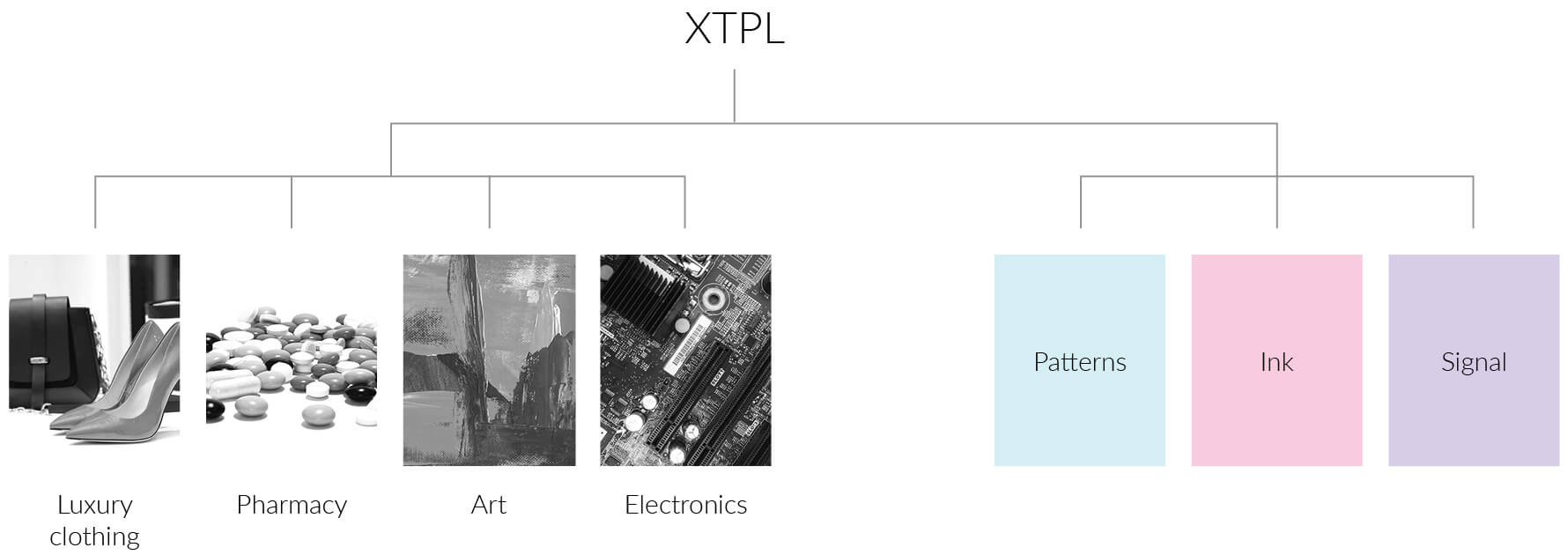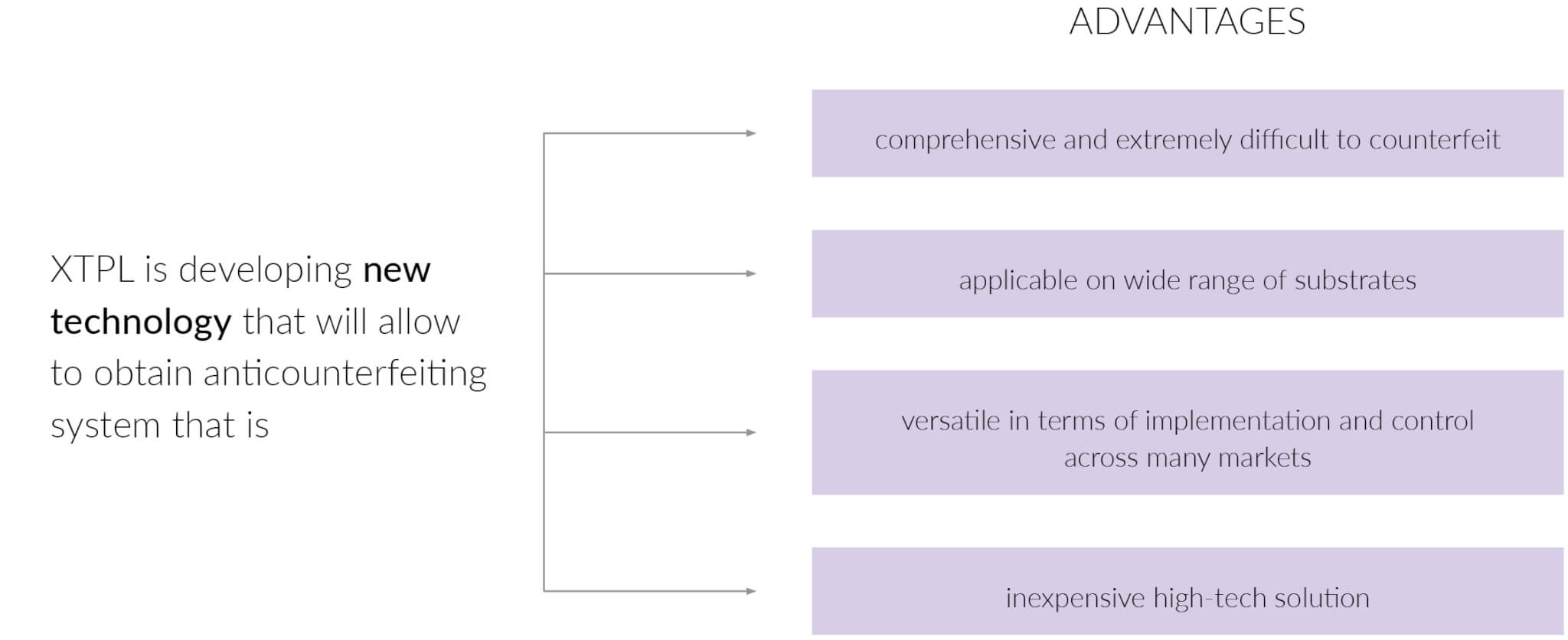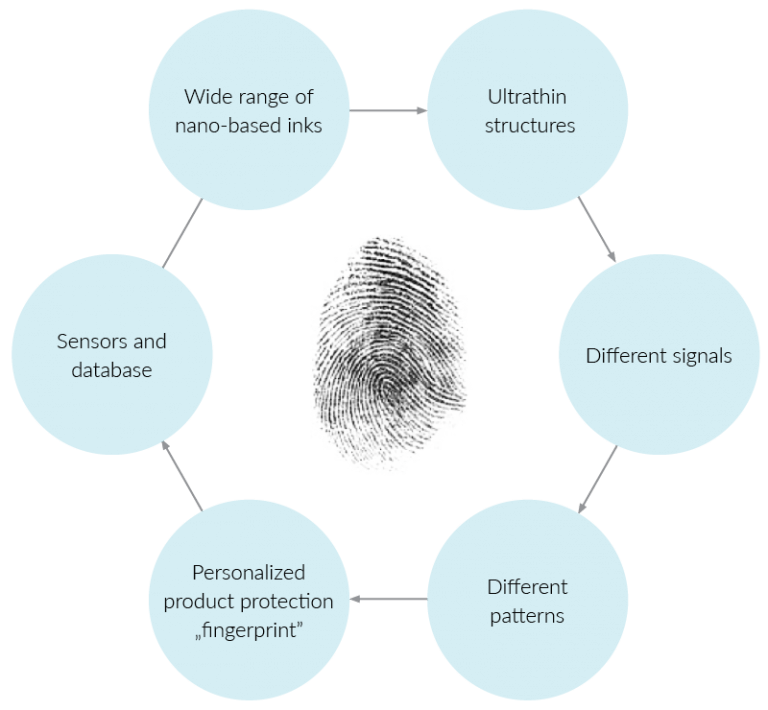Anticounterfeiting
The combination of two elements – ultraprecise printing and specific inks – leads to the creation of XTPL complex anticounterfeiting system based on the fingerprint principle.
The combination of two elements – ultraprecise printing and specific inks – leads to the creation of XTPL complex anticounterfeiting system based on the fingerprint principle.
XTPL system is very complex and therefore extremely difficult to imitate – the number of its combinations is almost unlimited (each combination represents a specific product or customer).



XTPL inks contain different types of nanoparticles, which exhibit a unique optical, electrical or magnetic signal (or a combination of these signals) with desired, strictly controlled values.

XTPL printing technology makes it possible to create a series of lines or other patterns with a width of only a few hundred nanometres, and thus invisible to the human eye. Each structure could be printed by a different ink and thus exhibit a different signal. Also their order can be freely changed & the printed surface in this way is extremely small.

The combination of these two elements – ultra thin printing and specific inks – leads to the creation of a complex anticounterfeiting system based on the “fingerprint” concept. Just as a fingerprint is unique to every human being, a sample containing a set of different signals with precisely defined parameters will be unique for a chosen, protected product.
Due to the lack of restrictions on the substrate described system could be used in various market segments.

The set of different signals is then read by the appropriate sensor and compared to the signals contained in the internal database. The user therefore receives a simple answer – whether the product is original (has the appropriate security system) or is a counterfeit.